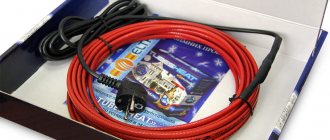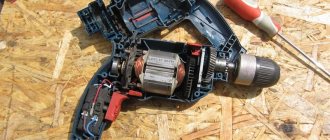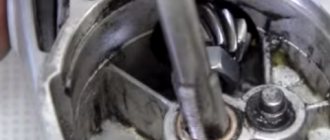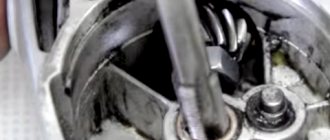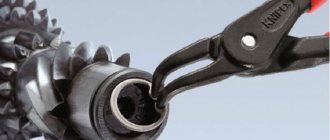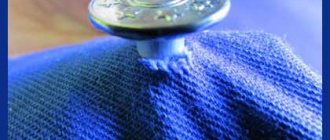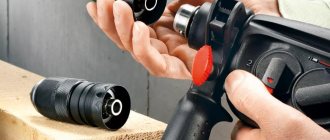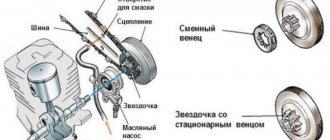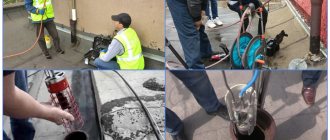How to quickly clean copper cables and wires.
Any specialist in the electrical field knows that one of the best types of wiring is copper cable. However, a priori, the competitor of aluminum wire cannot consist only of Cu (copper). Cores with increased conductivity of current and heat are necessarily “clad” in insulation. PVC insulation is needed for operation, but after it it gets in the way, because many people try to sell expensive copper as scrap copper.
How to quickly clean copper cable?
Stripped copper is more valuable, so we offer several simple ways to increase its value:
- A time-consuming method. You need a convenient cutter or blade. The end of the wire is fixed, the cable is tensioned, and the blade moves along. To speed up the process, the cable can be heated a little
- The traditional method is simple firing. Melted insulation causes a specific smell; in addition, the cable is often damaged and unsuitable for delivery. This method is only good for a large number of wires
- A reliable method is to use special cleaning equipment. Such devices can be found on the website. The method is suitable for recycling cables in production, as well as for those who regularly distribute copper
- A labor-intensive and time-consuming process is beating the insulation with a hammer. In addition to time costs, effort is required
- Burning insulation with a blowtorch. The temperature needs to be adjusted without being too overzealous with the heat. The process goes quickly if cleaning is carried out in pairs - one holds the cable, the other holds the blowtorch
Scrap copper has always been in demand; in order to obtain it, it is enough to collect scraps or wire that has been rejected; the so-called “expired” cable is also suitable. Of course, the fastest way to process waste is with the help of special machines, where wire scraps are sorted, crushed, and granulated, but many “miners” do this with their own hands. Recycled copper products get a new “life”, and those who found the answer to the question - how to quickly clean a copper cable - receive financial benefits.
> Scrap metal collection points in Moscow
Difference between wire and cable
When describing electrical wiring, the term “wire” or “cable” is often used as a conductor of current. To a person uninitiated in the intricacies of electrics, it may seem that this is one product. In fact, they are different.
A wire in the traditional sense is a cord with a small cross-section. Such a conductor can be single or multi-core. It may not have insulation at all, or if it does, it is light in the form of a tube. Removing it is not difficult at all.
The cable consists of a certain number of current carriers. They are connected into one unit, but do not touch each other and are enclosed in a shell made of a special material.
For a single-core wire, the cross-section is determined by one core; for a multi-core wire, the cross-sectional area is determined by the sum of the cross-sections of all cores. To improve the performance properties of the cable, a nylon thread is introduced into the middle.
Any conductor should be handled with care, especially aluminum conductors. Compared to copper, they are more fragile. Bending loads reduce the already small margin of safety of aluminum cores.
Some characteristics for comparison:
- density of aluminum - 2.7, copper - 8.9 t/mᶾ;
- multi-wire design is excluded for aluminum, but possible for copper;
- resistivity of aluminum is 0.0294, copper - 0.0175 Ohm x mm²/m.
Damage during stripping of aluminum cores further reduces their performance.
You can read more about the types of cables and wires in this material.
How to strip a wire while maintaining its properties
Let's start with simple methods.
Knife
A universal tool is used: a regular pen or office tool.
Improving the use of knives, many electricians make homemade devices for stripping insulation. For example, you can use a safety razor blade by simply screwing it to a clothespin.
Using holes of different diameters (on a clothespin), you get a universal tool for removing both the outer sheath and the coating directly on the conductors.
The simplest factory-made insulation stripping pliers work on this principle. The outer sheath is removed using calibrated holes, and conductors of small diameter are stripped using a blade with a molded hole.
Thermal method
If the question arises: how to quickly remove insulation from a wire, all means are good. Many craftsmen simply burn the ends of the conductors with a lighter or match. The method is not the best: Firstly, the cable may catch fire. Secondly, the remaining part of the shell loses its properties at a distance of 1–2 cm from the cleaned area. And finally, the conductor itself (copper or aluminum) is destroyed by such thermal effects.
Important! If a thermal method of processing conductors is used, it is necessary to ensure ventilation of the room. Any coating emits toxic smoke when heated.
If you need to quickly strip the wire, but there are no cutting tools, you can use a soldering iron. The tip of the conductor is burned with a hot tip, after which the insulation is easily removed.
There are thermal tools of industrial design.
Stripping the wires of insulation is carried out as follows: the heating elements are pressed to the cut point, the sheath is melted with a short pulse, the conductor remains untouched. Such devices can be stand-alone or part of soldering stations.
Advantage of wire thermocouples:
- Heating occurs pointwise; the copper or aluminum core does not change its properties.
- A thin melt line does not lead to waste of material.
- A sealed ring is formed around the shell, preventing the penetration of moisture.
The only limitation is the insulation material. Thermal stripping is used only in cables with polyvinyl chloride insulation. The fluoroplastic or rubber shell can only be removed mechanically.
Mechanical devices for stripping industrial wires
The most popular electrician tool is the “Insulation Stripping Complex”, known by the abbreviation KSI.
The operating principle is as follows:
During the initial compression of the pliers, the conductor is clamped between the grooved jaws (as in pliers), the other end is captured by the knife mechanism. The cutting attachment is spring-loaded and does not cut through the shell to the metal. This way the current-carrying core is guaranteed to be preserved. Next, the working levers are separated, and the notched sheath is removed from the wire.
The length of the area to be stripped is set using a limiter, against which the front wire rests when inserted into the tool.
There are certain restrictions: the tip cannot be too long. If you need to clean a long area, the process is repeated several times. In this case, the wire does not rest against the limiter, and the shifted section of the sheath is removed manually.
The complex copes well with both mono conductors and multi-core cores. There are restrictions on the diameter of the wire: a cable with a cross-section of more than 4.0 is almost impossible to process.
The next tool is simpler. End pliers for stripping insulation.
Designed for a diameter of up to 6.0 squares; it is difficult to expose a thicker wire manually. Between the cutting tips there is a screw stop, with which the diameter of the conductor is set. The distance between the grips is chosen to be slightly larger than the diameter of the current-carrying conductor. This is done to reduce the risk of damaging the metal. After squeezing the handles, the sheath is removed with a sharp movement along the wire. Working with such a device is not as convenient as with a CSI, but this is justified by its low cost.
Nippers, or the cutting sector of pliers, work in a similar way. Only stripping the wire with their help requires some skill.
The following device is designed to work with large diameter cables. This is a complex knife with a grip.
It can be used to strip wires of any length. First, a transverse incision is made, then a longitudinal one.
After which the sheath is easily removed without damaging the central conductor.
Stripping varnish-coated conductors
Such a conductor is used in transformer windings. Instead of a dielectric sheath, a thin varnish coating is applied to the copper core. The conductor is cleaned with a knife or sandpaper.
Types of insulating materials
There are single and double insulation.
The best option is cables equipped with double insulation. If you plan to place the wire in grooves, it is permissible to use single insulation
For its production, various insulating materials are used:
- Plastics based on organic compounds. These are mainly thermal plastics that soften when heated. When burned, these plastics release various toxins into the environment.
- Thermosetting plastics. They become harder when heated. Insulation made from them is used only in special cases when the requirements for it are increased.
- Natural or artificial rubber of different types. It hardens when heated and supports combustion.
- Fabric based insulation. Withstands a fairly high degree of heating (maximum 400⁰) while maintaining insulating properties.
- Shielding braid. This is not insulation in the literal sense, since the braid does not act as insulation, but it provides protection against mechanical damage.
- Armor braid. Also serves as protection against damage
The choice of tools for removing insulation depends on the material from which it is made.
Video on the topic
– a crucial moment, and it makes no difference what material the wires are made of or what they are coated with as an insulating material. Coated wires often have to be connected to each other before installation work, and when performing such work, you need to know how to properly remove the insulation from the wire. It is generally known that plastic insulating material is removed mechanically or by melting. The enamel coating must also be removed mechanically or chemically. When stripping wires, you must follow the rules for performing such work. After all, in the end, the connection of the exposed areas will be made with poor quality, which in the future can lead to system failure.
Popular methods of removing insulation
Practical skills play a big role in the process of stripping wire insulation. The main difficulties arise when working with thin wires, when every movement matters. Optimal pressure can only be achieved through practice.
The most commonly used methods for removing insulation are:
- using a knife;
- through side cutters;
- under the influence of high temperature;
- using a stripper.
Each option is preferable in specific circumstances.
Option No. 1 - using a knife to cut insulation
At home, a knife is most often used. When using this simple tool, it is important to choose the correct angle of the blade. The biggest mistake is cutting in a circle while keeping the cutting part perpendicular. In this case, it is difficult to avoid notching the core or breaking the secondary insulation.
If, when removing the braid from a wire with a cross-section of 0.6 to 0.8 mm, the core is damaged, then even with a slight bend it will break at this point
The correct position of the knife is when the tool and the wire axis are in the same plane. First, cut the braid along the conductor. Next, separate the insulation, take it to the side and finally cut it off at the base.
It is better to use a special electrician’s knife with a straight or curved blade to remove hard insulation from wires. The main thing is that there are no jagged or burrs on it. If the knife is folding, it must be equipped with a lock so that it does not fold spontaneously.
A good blade has a double-sided sharpening at a slight angle and an internal rounding of the cutting edge. Some versions of mechanic's knives have a special blade design - it is short and rounded inward, and there is a “heel” at the end. It limits the depth of cut, which is important if it is necessary to remove the top layer of insulation without damaging the sheath of individual cores.
Option No. 2 - side cutters for stripping insulation
Side cutters are a convenient and safe tool, but only if used correctly. What you need to pay attention to is the direction of the cutting edges and the force applied.
The tool is used in two ways:
- The sheath is cut from different sides, and then removed from the conductor. This method is suitable for working with wires with a large cross-section.
- The braid is fixed and cut through with the cutting edges of a side cutter, and then pulled to the side, making axial movements.
In any case, you need to act extremely carefully, otherwise the conductor will be either damaged or bitten off.
When working with a side cutter, you need to take into account that the sharpened side of the tool jaws must be oriented in the direction opposite to the vector of tightening of the braid
They also produce side cutters with notches for conductors of a certain diameter. This simplifies the use of the tool at home.
Following the recommendations will minimize the risk of biting the core. Also, proper use of the tool will free you from the use of large compressive forces.
Option No. 3 - thermochemical method of removal
With very thin conductors, with a cross-section of less than 0.2 mm, removing the insulation from an enamel wire or a wire with PVC insulation mechanically is a big risk. The thermochemical method is more suitable here.
In the first case, the technology is as follows:
- The wire is conveniently laid on a flat surface. Vinyl chloride insulation is placed under it.
- Heat up the soldering iron tip and carefully move it along the shell. When heated, it will disappear under the influence of the released chlorine.
There is another option for removing the enamel insulation from the cable. An aspirin tablet is placed on the wire, heated with a soldering iron and distributed along the entire length. Not only will the insulation be removed, but the wire will also be tinned.
PVC insulation is simply heated with a soldering iron or lighter, after which it is easily pulled off, because plastic loses density
Removing the braid by reflowing ensures the integrity of the conductor. The method works well on old wiring, since the winding here is hard and brittle.
Stripping the insulation of a thin enameled conductor can be done using fine sandpaper. Before removing the insulation layer from the wire, the sheet is bent in half so that the sandpaper is inside. Place the wire in the middle, lightly press it with your fingers and pull. Repeat the action until the enamel is completely cleansed.
Option No. 4 – stripping with a stripper
If the insulation stripping methods under consideration are manual, then some types of strippers allow this work to be partially mechanized. The tool most often consists of special pliers that work with a certain size of wires and cables.
Conventionally, strippers are divided into categories:
- miniature handheld;
- large rack;
- lever
The first ones look like clothespins. It has one or more holes in its spring-loaded jaws. There are small multifunctional strippers in a case-like form. The drop-down body has holes with knives for different sections of wires.
In addition, the device has a knife that cuts the braid longitudinally, a knife that works in the transverse direction or cuts circularly. They are also equipped with a retractable knife for stripping wires.
The next design is a stripper with levers. Visually, the tool is similar to scissors and includes:
- Knives with a wedge-shaped cut;
- Adjusting screw, with its help you set the desired cross-section.
The cable is secured with clamps, then the levers are pulled together and the insulation is removed instantly. The removal length is set manually. The main disadvantage is the need for adjustment when removing insulation from wires of different sections.
If you mistakenly insert a thick wire when setting the jaws to a smaller cross-section, the conductor will be damaged.
In the category of relatively cheap devices, there are also more advanced strippers. Their blades have holes for conductors
In addition to the main functions, most of these hand tools are used for crimping the ends of stranded wires, cutting wires, and cutting bolts. Sometimes they are used like simple pliers.
A tool with sockets in the blades, like the previous one, is universal. When working with it, you must not relax your attention so as not to place the current conductor in a hole that does not correspond to its cross-section.
These disadvantages are not typical for automatic lever strippers. The wire size is set automatically here. The spring-loaded working element begins to operate when the handles are compressed. You can remove not only the insulation from the core, but also the outer braiding from a round or flat wire.
Many models are equipped with a length limiter that allows you to remove the braid to a set length. The required limit is set once, and further withdrawals occur based on the set limit.
Automatic models, like manual ones, may have additional functionality - crimping tips, cutting, etc.
When choosing a stripper model, you need to proceed from where you plan to use it. For normal work at home, a simple hand tool will do.
There is a special stripper designed to remove insulation from a television cable. Its peculiarity is the presence of two cutting edges located at a certain distance. This ensures convenient installation of the F-connector later
When working with a lot of wires and cables, it is better to arm yourself with a semi-automatic or automatic device. This tool is essential for professional electrical installers.
There is an article on our website where we talked in detail about strippers for stripping insulation from wires. Click here to view the material.
Methods for cleaning cables for scrapping
Used colored cable scrap is a popular and expensive recyclable material. You can extract it yourself from old power, fiber optic, telephone, installation, and other wiring. What tools and equipment will be needed to remove the winding? How to quickly clean a cable for scrapping, spending a minimum of time and effort?
Popular methods for stripping insulation
When handing over a cable, the metal core of the conductors is of value. Before going to the receiving point, you need to strip the cable from the insulating winding. There are several ways to do this yourself:
- manual stripping with a knife or hammer is a labor-intensive and time-consuming process, suitable if the batch of scrap is small;
- roasting and melting - a fast process, but harmful to the environment, not recommended for thin-stranded scrap, the metal burns out along with the winding;
- the use of special equipment is the fastest and safest method; tools are used during the work.
Cleaning with a knife or hammer
A construction or stationery knife or pullers with hooks, adjusting screws, etc. are suitable for stripping wires. When working, carefully cut the winding along the core, then take it to the side and cut it.
When working with a hammer, they hit the cable with force until the insulation separates from the metal.
Firing and reflow
You can burn raw materials over a fire, but the method is justified for large volumes of raw materials. Perform work outdoors, observing safety precautions.
Melting a cable with a soldering iron is one of the ways to remove insulation from thin and thick wires and cables. Before work, the wire is laid on a flat horizontal surface. Then heat up the soldering iron and apply it vertically to the winding. As the insulation melts, the cable is rotated around its axis. After firing, the plastic can be easily removed with pliers, tweezers, or pliers.
Important! Work in a well-ventilated area. When the insulation melts, toxins are released and there is a strong plastic smell.
Using a side cutter and stipper
How to quickly clean the cable for scrap delivery and mechanize the process? Special tools will help:
- side cutter;
- stripper.
Side cutters are called wire cutters or tweezers for cutting wires. When using it, the free end of the wire is clamped between the blades, then carefully turned and pulled. The insulation is easily removed.
Note! The cutting edges are directed in the direction of movement of the tool so that the blades cut into the winding without much effort. If you handle the side cutter incorrectly, the cable will break off along with the insulation.
A stripper will help automate the cable cleaning process. There are different subtypes of the instrument. Models differ in the number of additional functions.
Stipper and working with it
The operating principle of all strippers is the same:
- the end of the cable is inserted into the hole of the tool;
- they clamp the handles of the stripper with their hands to cut through the windings;
- then the conductor is pulled outward, freeing it from insulation.
Important! The good thing about this tool is that it is simple and easy to use and is inexpensive. It rarely damages the cable, reduces winding removal time, and is suitable for working with single-core stranded conductors.
Special equipment
If there is a lot of scrap, special equipment for removing insulation will help simplify the preparation of raw materials. It can be rented directly from a centralized collection point.
Recycling collection points
Scrap acceptors purchase the following waste cable and wire products:
a) manufacturing defects, warehouse surplus;
b) used cable lines, production remains;
c) old uncleaned cable;
d) dismantled communications;
e) installation waste.
Acceptance is carried out according to several criteria, which determine the price per kg of scrap. The length of the conductor pieces, the percentage of scrap to insulation, and foreign impurities are taken into account.
It is recommended to hand over recyclable materials to collection points that have documents and permits to conduct this type of activity. Before weighing, the scrap is inspected and assessed by specialists.
By the way! To determine the weight of the metal without winding, the acceptance specialist cuts off a prototype conductor, strips it and weighs it.
Recommendations for quick removal of insulation
There are non-standard situations from which it is difficult even for a specialist to get out. In this case, you have to make creative decisions and use the tools at hand. Let's look at a couple of examples.
Example No. 1 - damage to the wires leading to the plug
The method is used if, upon visual inspection, it is discovered that the charger has faulty thin wires leading to the plug. The main difficulty of the situation is not only the small cross-section, but also the multi-core cable. Another problematic point is that the wires are enclosed in a continuous braid, so the insulation serves not just as protection, but as a two or three-chamber collector.
To quickly remove the insulation in this case, experts use a thin blade taken from a razor cassette. The cable is secured using a clamp from a table lamp or a vice. The cable is divided into cores, and a blade is used to carefully make an incision in the right place, not too deep. Next, part of the layer is pryed off with a fingernail and carefully removed.
Example No. 2 - removing protection from a cable in a busy area
There is a need to remove cable protection in a loaded area of electrical networks.
The protective layer can be in the form of rigid outer insulation, an internal filler layer, fabric insulation impregnated with resins, or individual insulation for each core
First, using a tool, the outer sheath is removed by cutting it along the cable. Then, using pliers, the cores are removed one by one. The remaining insulating layer is simply cut off.
How to remove cable insulation quickly
Old wires and scraps from storage are sources of pure copper or aluminum. Depending on the presence of insulation, they can be cleaned or uncleaned. The former are valued higher. Distributors who know how to quickly remove insulation from a cable receive high income by selling illicit goods, factory defects and used wires. buys lots wholesale and retail.
Methods for cleaning cable insulation
Reception points are interested in the current-carrying conductors, and not the protective winding of the wire. Therefore, it is more profitable for distributors to hand over cables that have been stripped of insulation.
To quickly get rid of the protective shell, use one of three methods:
- Mechanical. Manual wire stripping using a knife and other available tools. Allows you to remove insulation from a small batch.
- Thermal. Burning of the winding to extract pure metal. During the thermal cleaning of cables, there is a risk of damage to the conductors.
- Use of special equipment. The distributor can equip himself with strippers and side cutters to carefully remove the insulation from the wire. The enterprises have a special machine for cutting cables and removing windings.
Insulation protects current-carrying conductors from various external influences. But to make a profit from cable scrap, you have to get rid of it. A special tool allows you to quickly clean current-carrying conductors from additional protective sheaths. The insulation is completely removed. Tsvetmet has no foreign inclusions.
Why clean the cable before scrapping?
Insulation made from paper, PVC and plastic is considered an additional blockage, so contractors try to get rid of it. Buyers value pure non-ferrous metal much more highly.
Reasons for stripping cable insulation:
- extraction of clean raw materials with a minimum percentage of clogging;
- obtaining a high income for the delivery of cable scrap;
- saving time and resources for processing secondary raw materials;
- quick weighing and evaluation of retail or wholesale lots.
Insulation is not an obstacle to scrapping wires. But by buying a batch of cables without it, he makes a better offer. Preference is given to cleaned wires without traces of firing. Deliverers try to clean the cable before delivery for financial reasons.
buys wires with insulation residues, traces of firing and in perfect condition. Offers free removal of batches of 5 tons or more. Buys scrap in Moscow every day until 21:00.
Advantages :
- quick acceptance of cable scrap;
- purchase of wires with and without insulation;
- instant payment of money;
- accurate batch weighing;
- fast and fair assessment;
- two scrap purchase points in Moscow;
- 12 hour work day.
Company managers know how much cleaned cable scrap costs today. They provide free consultation over the phone. They accept applications for the reception and removal of cable scrap in Moscow.
Tips for Safely Stripping Insulation
Electrical work is not easy. Therefore, even if you have certain knowledge, you must not forget that the damaged core will eventually fail.
For safety reasons, when removing insulation that is slightly longer than required, the excess must be cut off. Exposed veins are too dangerous.
It is not advisable for a home handyman to purchase expensive tools in order to use them several times while removing insulation. In most cases, simple means at hand are quite suitable.
When working with a tool, you need to be extremely careful and attentive. The insulation should be pressed down slowly to avoid damage to the cores.
Microscopic damage to the conductors is invisible, so it is better to do everything slowly, but correctly, so as not to have big problems later.
To ensure reliable and safe contact, you need to use special terminal blocks.
It is not always advisable to remove the insulation if the cable consists of thin wires. It is possible, without removing the insulating layer, to separate the wires and use a special clamp with teeth to create contact
Contact when installing a piercing clamp will ensure the insulation is pierced. Sometimes that's enough.
Application of an automatic stripper
Manually stripping large quantities of wires can be quite time consuming. And if there are also wires with a large number of cores, the matter will take a long time. Here you can use a special type of pliers called a stripper.
They are quite comfortable to work with. With just a little hand pressure, the insulation is removed almost instantly. Typically, for such work in everyday life, a stripper model WS-04 from a German manufacturer is used.
Such a tool has the ability to cut through and remove insulation from wires with a diameter ranging from 0.5 to 2.7 mm. This is without pre-adjustment.
When performing adjustments, you can work with wires of a much smaller cross-section without damaging the integrity of the conductor cores.
How to clean copper
from various types of contaminants so as not to damage the metal and so that it shines again? This question is often of interest to modern needlewomen who make various jewelry from copper, as well as modern housewives who still use copper cutlery and other kitchen utensils made of this metal.
Despite the fact that copper is a fairly plastic and wear-resistant material, it is susceptible to oxidation, so when exposed to moisture, an unpleasant greenish coating appears on the surface of copper cutlery or jewelry. If you cook food in dishes made of oxidized copper, the food will acquire an unpleasant taste and smell, and will also become unsafe for health.
Also, the surface of copper products may darken, so you need to know how you can clean metal from various types of contaminants at home effectively and safely.
